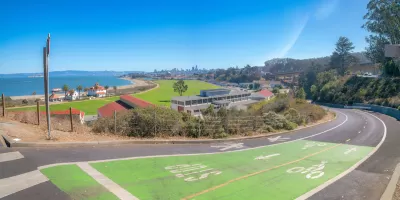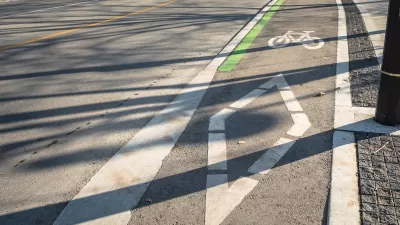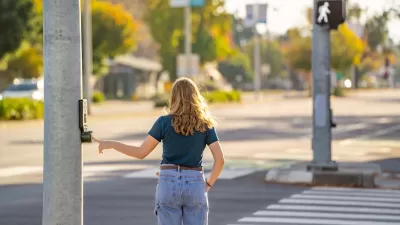The new plan rejects some of Gov. Newsom’s proposed cuts to active transportation funding.

The California state legislature is pushing back on Governor Newsom’s proposed budget, countering proposed cuts to active transportation and safe streets programs.
As Melanie Curry explains in Streetsblog California, the legislature’s plan creates a “Projected Surplus Temporary Holding Account” that would hold off on disbursing projected surplus funds until it’s clear they will materialize. Instead of cutting the Active Transportation Program by $1 billion as the governor proposed, the plan proposes funding it from the State Highway Account, which advocates say should more heavily fund multimodal transportation projects.
“In terms of public transit, the Governor had proposed delaying $2.1 billion for the Transit and Intercity Rail Capital Program (TIRCP) from 2021-22 to later years, and cutting it by $148 million.” The legislature’s plan rejects the cut, but supports the proposed delay and the change of the funding source from the state’s general fund to the Greenhouse Gas Reduction Fund (GGRF). The legislature’s plan also supports the governor’s proposal to delay Zero Emission Transit Capital Program funding.
Nonprofit NextGen California expressed concern that both proposals signal “the end of California’s brief effort to expand climate investments beyond last decade’s zero-sum approach,” saying the shifts to GGRF funding amount to “cuts to the state’s total level of climate investment.”
FULL STORY: Legislature Rejects Governor’s Proposed Cuts to Active Transportation, Intercity Rail

Trump Administration Could Effectively End Housing Voucher Program
Federal officials are eyeing major cuts to the Section 8 program that helps millions of low-income households pay rent.

Planetizen Federal Action Tracker
A weekly monitor of how Trump’s orders and actions are impacting planners and planning in America.

Ken Jennings Launches Transit Web Series
The Jeopardy champ wants you to ride public transit.

California Invests Additional $5M in Electric School Buses
The state wants to electrify all of its school bus fleets by 2035.

Austin Launches $2M Homelessness Prevention Fund
A new grant program from the city’s Homeless Strategy Office will fund rental assistance and supportive services.

Alabama School Forestry Initiative Brings Trees to Schoolyards
Trees can improve physical and mental health for students and commnity members.
Urban Design for Planners 1: Software Tools
This six-course series explores essential urban design concepts using open source software and equips planners with the tools they need to participate fully in the urban design process.
Planning for Universal Design
Learn the tools for implementing Universal Design in planning regulations.
Ada County Highway District
Clanton & Associates, Inc.
Jessamine County Fiscal Court
Institute for Housing and Urban Development Studies (IHS)
City of Grandview
Harvard GSD Executive Education
Toledo-Lucas County Plan Commissions
Salt Lake City
NYU Wagner Graduate School of Public Service





























